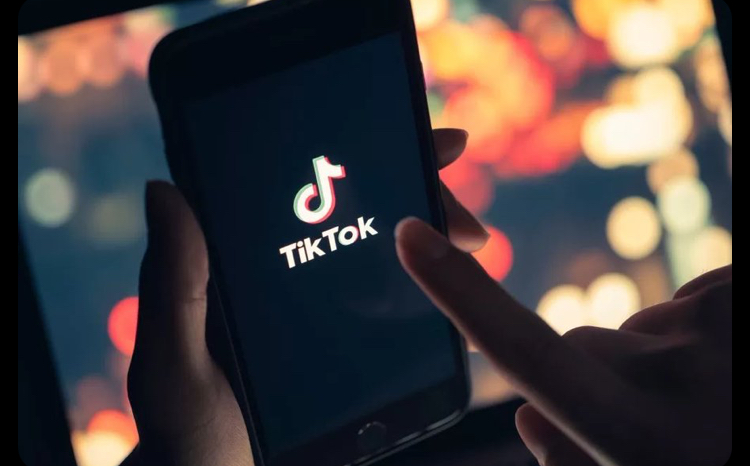In a move that has shocked millions of users across the United States, the popular social media platform, TikTok, is set to go offline for its American audience this coming Sunday. This decision comes after months of legal wrangling, national security concerns, and debates over data privacy, culminating in a law signed by President Joe Biden in April 2024, mandating that ByteDance, TikTok’s Chinese parent company, either sell its U.S. operations or face a ban.
The implications of this shutdown are far-reaching, affecting not just the casual user but also creators, businesses, and the broader digital entertainment landscape. For many, TikTok isn’t just an app; it’s a platform where careers have been launched, ideas have been shared, and communities have been built. The sudden cessation of service in such a major market could have a transformative impact on the social media ecosystem.
The law stipulates that by January 19, 2025, ByteDance must have divested its U.S. assets or face the consequence of a nationwide ban. The Supreme Court, which heard arguments on this matter, seemed inclined to uphold the legislation based on national security concerns. However, the exact mechanics of how this ban would operate remain somewhat nebulous.
TikTok, as part of its preparation for this scenario, has reportedly instructed its U.S. employees that their employment, pay, and benefits would remain secure, even if the app shuts down. This move indicates a strategic pivot towards potentially focusing on international markets while the U.S. situation resolves. The company has also been vocal about exploring options to comply with the law, including looking into potential buyers, though no definitive deal has been publicly confirmed.
For users, the immediate effect will start with the app’s disappearance from Apple’s App Store and Google Play. New users won’t be able to download TikTok, and existing users will not receive updates, security patches, or bug fixes. Over time, without these updates, the app’s functionality could degrade, leading to performance issues, security vulnerabilities, and eventually, an unusable product on American devices.
The community of TikTok creators, many of whom have turned their hobby into a full or part-time income, are bracing for impact. Creators like Neiltheceo and Mrs. Space Cadet, who have built substantial followings and revenue streams from the platform, are now forced to pivot to other platforms. Instagram Reels and YouTube Shorts are the most immediate alternatives, although they come with their own set of algorithms and user dynamics that might not favor all TikTok creators equally.
The economic ripple effects extend beyond individual creators. Brands and marketers that have heavily invested in TikTok for advertising and product placement are now reevaluating their digital marketing strategies. TikTok has become a significant player in digital advertising, with its unique algorithm that often leads to higher engagement rates compared to other platforms. The absence of TikTok in the U.S. could mean a reshuffling of digital ad budgets, likely benefiting competitors like Instagram, which already has a robust advertising ecosystem.
However, there’s a silver lining for some. The vacuum left by TikTok might spur innovation or the growth of alternative platforms. Apps like Lemon8, Triller, or even newer, less-known platforms could gain traction if they manage to capture even a fraction of TikTok’s user base. There’s also the possibility of ByteDance or another entity relaunching a similar service under new ownership or with different data privacy assurances.
From a legal perspective, the story isn’t entirely over. President-elect Donald Trump, who has expressed interest in “saving TikTok,” might influence the situation once sworn into office. His administration could choose to revisit the law or negotiate the terms of TikTok’s operation in the U.S. However, any such move would require navigating complex legal and security landscapes, not to mention the political implications of reversing or modifying a law passed with bipartisan support.
For users looking to save their content, TikTok has provided options to download videos and data. However, the process can be cumbersome, particularly for those with extensive archives or private account settings. There’s also the tech-savvy route of using VPNs (Virtual Private Networks) to access TikTok post-ban, though this solution comes with its caveats, including potential legal liabilities and technical hurdles like slower connections or service disruptions.
As we edge closer to this Sunday, the narrative around TikTok’s fate is one of uncertainty mixed with adaptation. Users are sharing heartfelt goodbyes, creators are migrating to new platforms, and businesses are recalibrating their digital strategies. The broader conversation about data privacy, national security, and the influence of foreign tech on domestic platforms continues, setting a precedent that could affect how other social media giants operate in the U.S.
In conclusion, while TikTok’s offline status in the U.S. marks the end of an era for many, it also opens a new chapter in digital culture, potentially reshaping how content is created, shared, and consumed in America. The coming weeks and months will be telling, as we see if TikTok can survive this ban, or if it will be remembered as a cultural phenomenon of the early 2020s, overtaken by new platforms ready to take its place.

